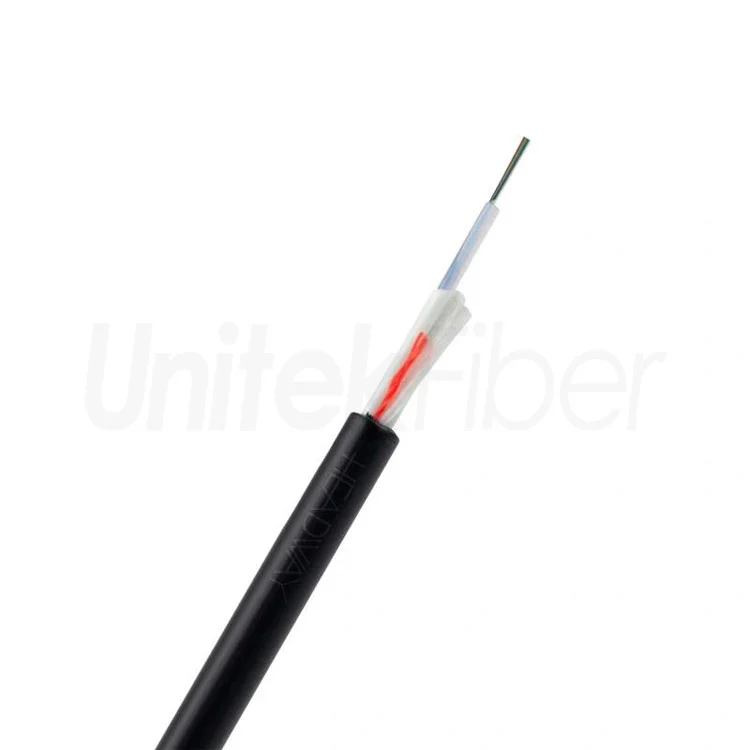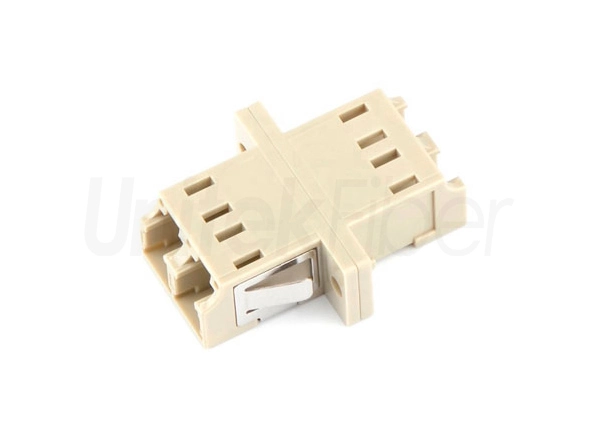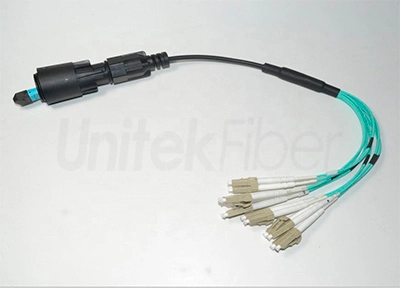
In the high-speed optical transceiver market, 400G QSFP-DD transceiver module and 400G OSFP transceiver module are two prominent form factors that have been widely discussed. Understanding the differences between them is crucial for network engineers and data center operators.
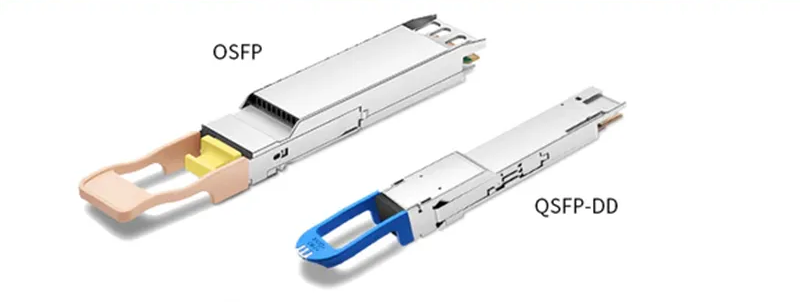
The 400G QSFP-DD (Quad Small Form-factor Pluggable Double Density) transceiver has a form factor that is an evolution of the traditional QSFP. The 400G QSFP-DD fiber transceiver measures approximately 56mm x 18mm x 8mm. It has a relatively compact and elongated shape. The double-density design allows it to support higher data rates while maintaining a similar footprint to its predecessors.
On the other hand, the 400G OSFP (Octal Small Form-factor Pluggable) transceiver is a bit larger, measuring around 32mm x 13.5mm x 8mm. The 400G OSFP optical transceiver has a more square-like appearance. The size difference can have implications for the density of transceivers that can be populated on a line card or in a chassis. For example, in a space-constrained environment, the choice between QSFP-DD transceiver and OSFP transceiver might be influenced by how many modules can fit in a given area.
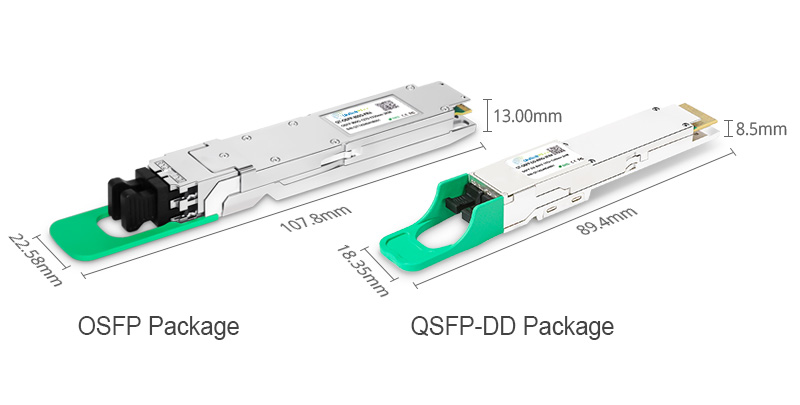
400G QSFP-DD transceiver module typically uses eight electrical lanes. These lanes are configured in a way that allows for the transmission and reception of data at a high rate. Each lane can handle a certain amount of data traffic, and together they aggregate to achieve the 400Gbps data rate.
In contrast, 400G OSFP fiber optic transceiver often utilizes eight or even more electrical lanes. The specific lane configuration and how the data is distributed among them can vary depending on the manufacturer and the specific application requirements. The difference in lane configuration can affect the complexity of the circuitry and the overall performance characteristics of the transceiver.
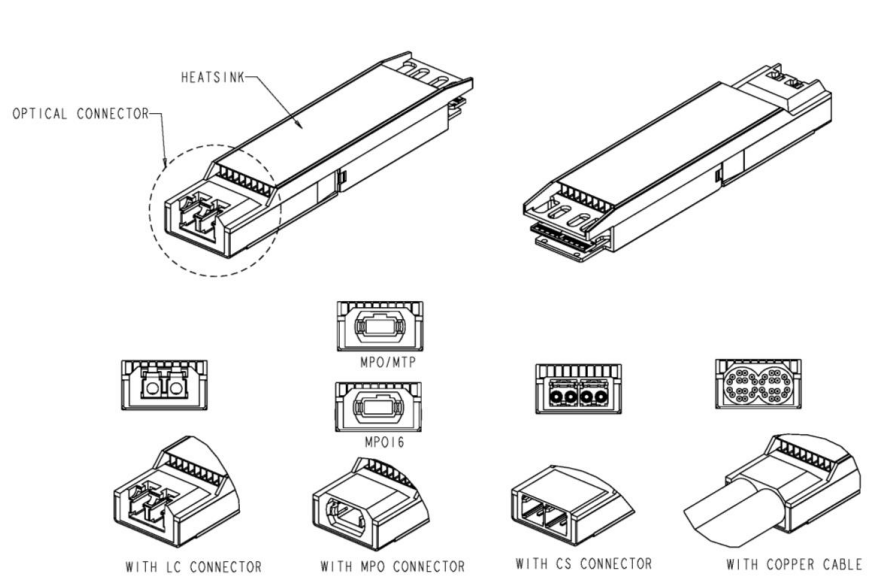
Power consumption is an important factor to consider. 400G OSFP optical transceiver, due to its potentially different electrical and optical designs, may have different power consumption levels compared to 400G QSFP-DD fiber transceiver. Generally, both types of transceivers consume a significant amount of power, but the specific values can vary. Higher power consumption also means that more attention needs to be paid to heat dissipation. OSFP transceiver might require more elaborate cooling solutions in some cases, as it could generate more heat depending on its internal components and operating conditions.
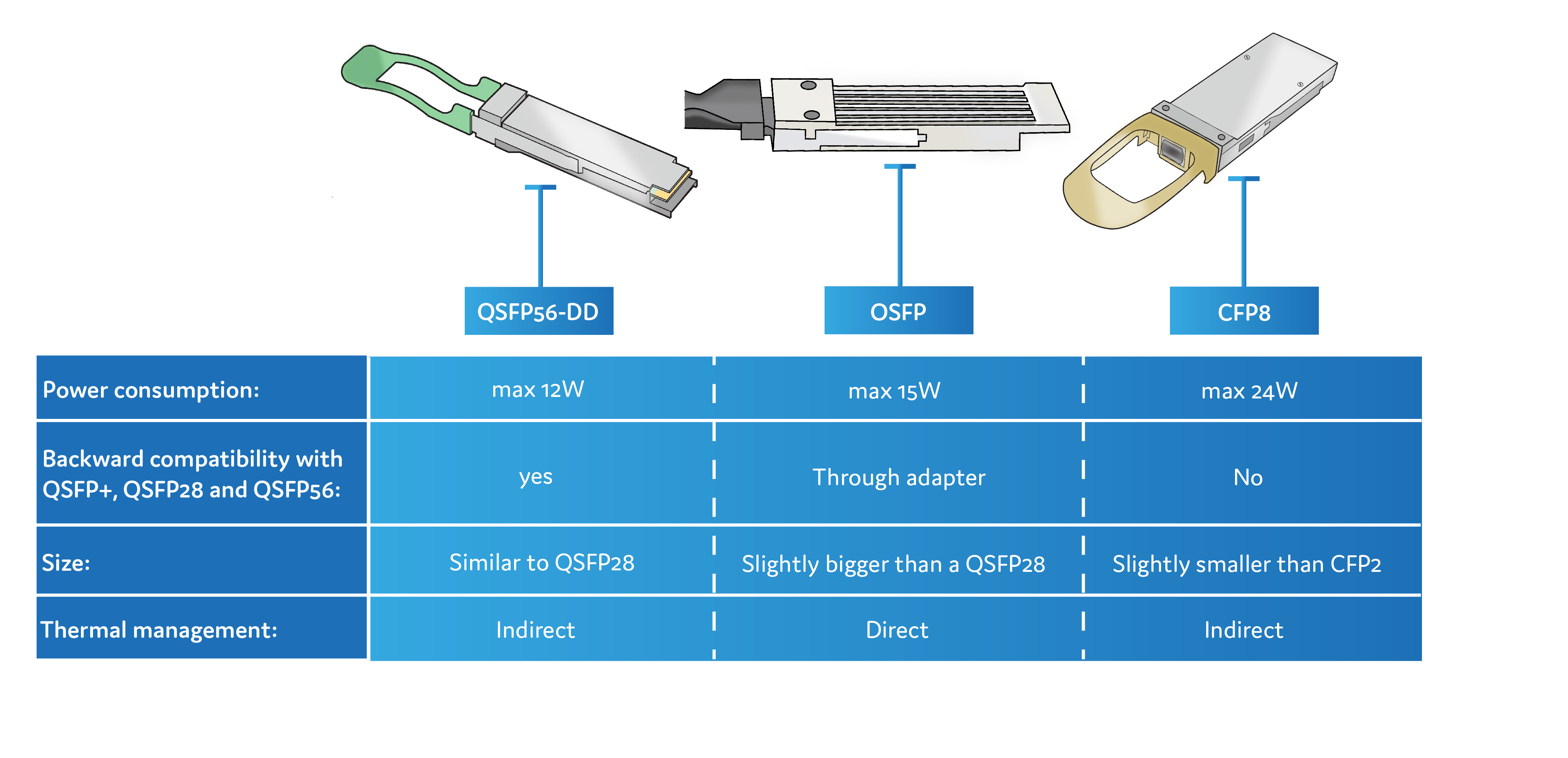
The optical performance of 400G QSFP-DD transceiver and 400G OSFP transceiver can also differ. They are both designed to support high-speed optical data transmission, but factors such as the type of optical components used, the modulation schemes, and the supported fiber types can vary. For example, in terms of reach, some QSFP-DD fiber transceivers might be optimized for shorter distances within a data center, while certain OSFP models could potentially offer longer reach capabilities, depending on the specific optical technology employed.
In terms of market adoption, both 400G QSFP-DD transceiver module and 400G OSFP transceiver module have their own supporters and use cases. However, the QSFP-DD form factor has a certain advantage in terms of its compatibility with existing QSFP infrastructure and its wider adoption in some industry segments. The OSFP, on the other hand, is gaining ground and has its own set of vendors and applications that are leveraging its unique features. The availability of compatible optics, cables, and networking equipment in the market also varies for each form factor, which can influence the decision-making process when choosing between them.
Generally, 400G SR8 optical transceiver, with its more complex eight-lane circuitry, tends to consume more power compared to 400G SR4. Higher power consumption also means that more attention needs to be paid to heat dissipation. The networking equipment using 400G SR8 fiber transceiver may require more advanced cooling mechanisms to ensure proper operation and prevent overheating.
400G QSFP-DD and 400G OSFP have several differences in terms of physical characteristics, electrical interfaces, power consumption, optical performance, and market adoption. When selecting the appropriate transceiver for a particular network or data center application, a careful evaluation of these differences and how they align with the specific requirements is essential to ensure optimal performance and cost-effectiveness. UnitekFiber as a professional transceiver module manufacture, we offer a comprehensive of fiber transceiver, please kindly contact our sales@unitekfiber.com for more detail.

